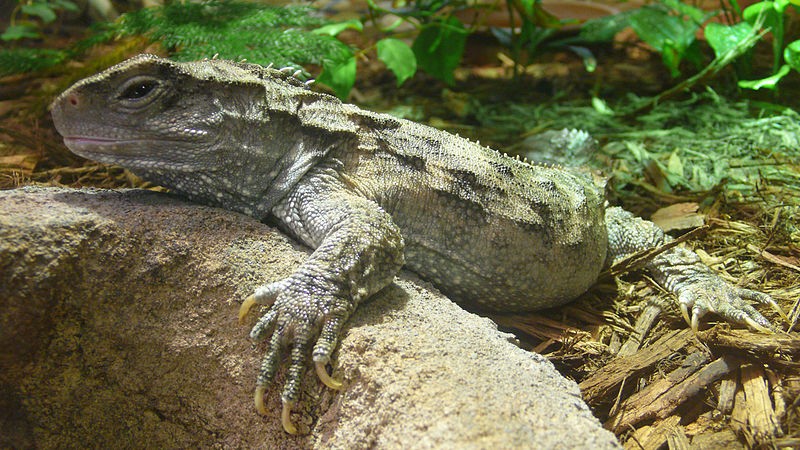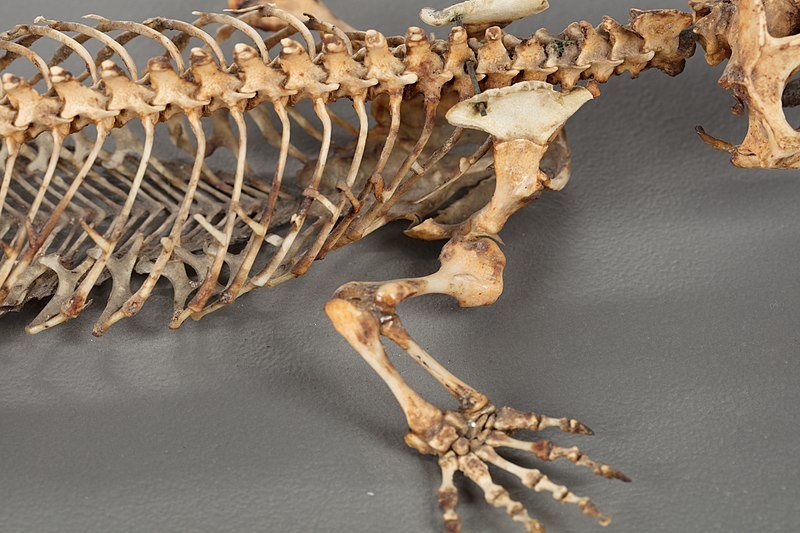Tuatara in New Zealand resembles dismal iguanas. These spiny reptiles, however, are not lizards. Instead, they are the last survivors of the Rhynchocephalians, an enigmatic and ancient order of reptiles that mainly perished during their heyday in the Jurassic period.
They are, without a doubt, the 'oddballs' of the reptilian world.

Tuataras
Tuataras may live for almost a century, like cold conditions, and can shear insects, seabirds, and each other with their jaws sliding back and forth. They even have a primitive third eye behind the scales on top of their skulls, which may aid in tracking the sun.
Tuatara is an evolutionary puzzle because of its strange characteristics, and paleontologists have been baffled by the lack of a fossil record of its long-lost kin. Almost all Rhynchocephalians went extinct at the end of the Mesozoic Era, most likely due to lizards and snakes outcompeting them. Many people just left behind dusty tooth and jaw bits.
It turns out that a critical component of this puzzle has been resting in a museum drawer for decades. Stephanie Pierce, the museum's curator of vertebrate paleontology, and her team recently discovered the nearly complete skeleton of a lizard-like animal on a slab of stone small enough to fit in the palm of their hands while sifting through a backlog of fossils at Harvard University's Museum of Comparative Zoology.
A Previous Discovery

During an expedition to the Kayenta Formation, a fossil-rich outcrop in northern Arizona, the extraordinary specimen was discovered in 1982. This swath of red rock was laid down during the early Jurassic era when dinosaurs were just getting started.
Early dinosaurs like the crested Dilophosaurus coexisted alongside hefty, crocodile-like beasts covered in armor on this primordial floodplain. Shrew-like animals and this odd new reptile scurried underfoot.
While early mammal fossils attracted a lot of attention at the site, Dr. Pierce and Tiago Simes, a Harvard postdoctoral paleontologist who specializes in the early evolution of lizards, have finally researched this species in depth.
The species was named Navajosphenodon sani in a report published in Communications Biology on Thursday. The Navajo Tribe, who reside in the region where the fossil was discovered, is referenced in both the genus and species names ("old age" in Navajo).
Micro-CT scans were used to analyze the squished fossil in three dimensions, and the flattened cranium was digitally stitched together like a jigsaw.
Physical Structure
The structure of its head matched that of a tuatara, despite its lizard-like physique. It had rows of sharp, interlocking teeth that protruded directly from the jawbone. Two holes were also found behind the animal's eye on the skull.
This is one of the primary characteristics distinguishing tuatara from lizards, which only have one hole. As the tuatara bites down and saws through prey, the additional hole supports the skull.
The fossil shows that contemporary tuatara bodies appeared in the Jurassic age and haven't evolved much in 190 million years. Dr. Simes pointed out that current tuatara jaws finish in a series of beaklike fused teeth lacking in Navajosphenodon.
According to Kelsey Jenkins, many lineages of Rhynchocephalians have displayed little change throughout their history, a Yale doctoral student who specializes in early reptile evolution.
On the other hand, two hundred million years is a long time. "The only things that are that well preserved are horseshoe crabs and cockroaches - not a decent-sized reptile," Ms. Jenkins, who was not involved in the current study, said.
This lack of change, according to researchers, might be due to natural selection going into overdrive. "Slow rates of evolution don't always imply no evolution," Dr. Simes explained. It's essentially the evolutionary counterpart of the old saying, "If it ain't broke, don't repair it."
Studying the Navajosphenodon
While the finding of Navajosphenodon adds to our understanding of tuatara evolution, much of the reptile's past remains unknown. It will be difficult for scientists to figure out why these lone survivors have evolutionary cheat codes without further fossil finds.
For new about the animal kingdom, don't forget to follow Nature World News!
© 2025 NatureWorldNews.com All rights reserved. Do not reproduce without permission.





